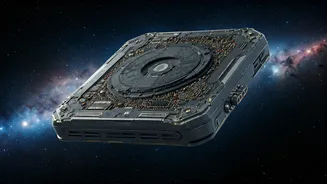Ancient Geological Time
The discovery of ancient rocks in Australia holds profound implications for understanding the Moon's formation. These rocks, bearing the marks of early
Earth, act as a time capsule, preserving information about the conditions that prevailed during the Moon's creation. Examining these ancient geological specimens offers a unique window into a pivotal event in the Solar System's history. These rocks' composition, including trace elements and isotopic ratios, can be analyzed to determine the materials present during the Moon's formation. The goal is to compare this data with lunar samples, thereby establishing the origin of the Moon. This comparative approach facilitates the matching of the Moon's origin to either a single catastrophic impact event or a series of smaller impacts. This research's significance stems from providing insights into planetary formation processes. It would allow scientists to enhance the overall understanding of how planets and their satellites, like the Moon, were formed. This information has implications not only for understanding our celestial neighbor but also for understanding the formation of other planetary systems in the universe, helping advance the field of space science.
Lunar Formation Theories
The Moon's origin has long captivated scientists. The prevailing theory suggests that the Moon resulted from a colossal impact between Earth and a Mars-sized object known as Theia. This impact, billions of years ago, ejected vast amounts of debris into space, which subsequently coalesced to form the Moon. However, this theory poses several questions, particularly regarding the Moon's composition, which closely resembles Earth's mantle. The rocks in Australia become relevant here. Analyzing the rocks helps in reconstructing the conditions of early Earth and comparing these findings with lunar materials. Other theories propose alternative scenarios. Some suggest that the Moon formed through gravitational capture, where a celestial body, like the Moon, was pulled into orbit around Earth. Another idea proposes that the Moon and Earth formed simultaneously from the same protoplanetary disk. The findings from ancient Australian rocks can help validate these various theories. These can also narrow down the conditions and the specific type of impact. Ultimately, the study of ancient rocks contributes to our growing understanding of our solar system's history and the processes that shaped it.
Australian Rock Analysis
The study of ancient Australian rocks involves advanced analytical techniques. Scientists employ sophisticated methods, such as mass spectrometry, to determine the rock's elemental composition. This analysis provides the ratio of various isotopes, which act as 'fingerprints' of different geological processes. The rocks' mineral composition and the presence of trace elements are crucial in understanding their history. Scientists can trace the conditions under which these rocks formed, providing clues about the surrounding environment. Researchers need to correlate the data from these rocks with lunar samples brought back by Apollo missions. This comparative analysis can determine if the materials from Earth were incorporated into the Moon. This approach will strengthen the impact of the giant impact theory. The techniques used allow scientists to gather crucial data about the formation and evolution of both Earth and the Moon. Such investigation into these rocks contributes to the overall understanding of planetary formation processes and the geological history of the Earth-Moon system. This provides a detailed examination of the early Solar System.
Future Research Avenues
The ongoing research on Australian rocks opens several avenues for future investigations. Scientists may look for additional ancient rock samples across other locations worldwide. This would provide a broader dataset for comparative analysis, strengthening the conclusions drawn from the current research. Advanced analytical techniques will continue to evolve, offering more precise and detailed insights. This includes enhancing mass spectrometry and other analytical tools. These enhancements should lead to a more in-depth exploration of the rock's composition and the conditions during their formation. Moreover, future studies may involve more sophisticated modeling of the Earth-Moon system. Scientists can simulate various impact scenarios and compare them with the data gathered from the rocks. Furthermore, international collaborations will be crucial for accessing and analyzing samples from different regions. This approach will create a more complete and global perspective on the topic. The continuation of this research will not only refine our understanding of the Moon's origin. It will also offer wider insights into planetary evolution, impact dynamics, and the processes that shaped our Solar System.














